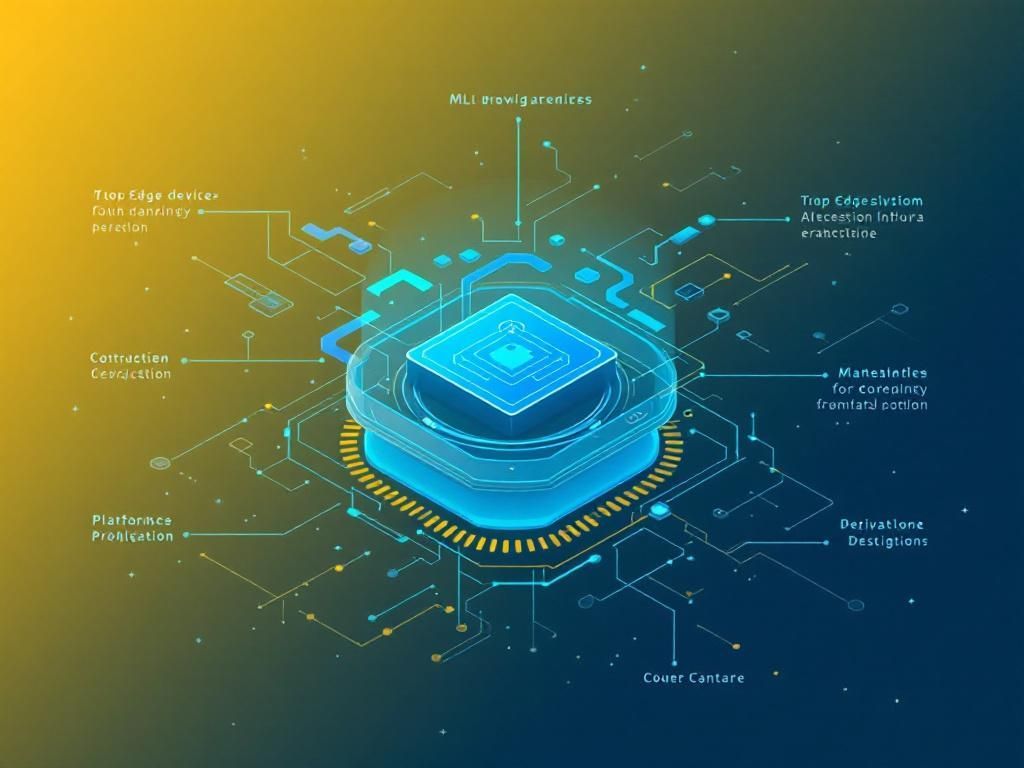The rapid evolution of edge computing has propelled the deployment of machine learning (ML) models directly on edge devices. This shift is not merely a trend; it’s a pivotal move towards enhancing data processing efficiency, reducing latency, and optimizing bandwidth usage in various applications ranging from IoT to autonomous systems. As we look towards 2025, several platforms stand out for their capabilities, flexibility, and user-friendliness in deploying ML models at the edge.
Understanding Edge Device ML
Edge device ML refers to the implementation of machine learning algorithms on local devices, which can process data closer to where it’s generated. This paradigm shift brings significant advantages:
- Reduced latency: Processing data at the source minimizes the delay in decision-making.
- Bandwidth optimization: Sending only essential data to the cloud reduces the necessary bandwidth.
- Enhanced privacy: Sensitive data can be processed locally, minimizing exposure.
- Real-time analytics: Immediate insights can be gained from data, which is crucial for time-sensitive applications.
Key Features to Look for in ML Deployment Platforms
As businesses and developers explore edge device ML deployment, several key features should be prioritized:
1. Compatibility
The platform should support various hardware architectures including CPUs, GPUs, and specialized accelerators like TPUs and FPGAs.
2. Ease of Use
A user-friendly interface, along with comprehensive documentation, can significantly reduce the learning curve for developers.
3. Scalability
Platforms must offer robust tools to manage and scale deployments efficiently as demand grows.
4. Security
Security features are critical, especially when handling sensitive data. Encryption and secure communication protocols should be standard.
5. Performance Optimization
Capabilities for model optimization, such as quantization and pruning, can enhance performance on resource-constrained devices.
Leading Edge Device ML Deployment Platforms of 2025
Based on the features outlined, here’s a look at some of the leading platforms expected to dominate in 2025:
1. NVIDIA Jetson
NVIDIA Jetson continues to lead the edge computing space with its powerful GPUs and comprehensive software stack.
Key Features:
- Supports TensorRT for optimizing deep learning models.
- Offers a vast ecosystem with extensive libraries and tools.
- Real-time video processing capabilities.
2. Google Coral
Google’s Coral platform focuses on low-power, high-performance ML at the edge, making it ideal for IoT applications.
Key Features:
- TPU hardware for fast inference.
- Easy integration with TensorFlow Lite.
- Built-in support for edge TPU for efficient processing.
3. AWS IoT Greengrass
AWS IoT Greengrass extends cloud capabilities to local devices, allowing them to act locally on the data they generate while still using the cloud for management and analytics.
Key Features:
- Seamless integration with AWS services.
- Local execution of Lambda functions for real-time processing.
- Built-in security measures.
4. Microsoft Azure IoT Edge
Microsoft Azure IoT Edge empowers users to deploy cloud workloads, such as AI and analytics, locally on IoT devices.
Key Features:
- Integration with Azure services for enhanced flexibility.
- Support for Docker containers to streamline deployment.
- Machine learning model distribution capabilities.
5. Edge Impulse
Edge Impulse is tailored for developers looking to quickly build and deploy machine learning models on edge devices, particularly in embedded systems.
Key Features:
- No-code/low-code platform for rapid prototyping.
- Supports various hardware platforms.
- Focus on sensor data processing.
Evaluating Deployment Strategies
When deploying ML models at the edge, consider the following strategies:
1. Continuous Learning
Implement a feedback loop where models are regularly updated based on new data collected from edge devices. This ensures that models remain accurate and relevant.
2. Hybrid Deployments
Utilizing a hybrid approach where some processing is done on the edge and some in the cloud can optimize performance and resource use.
3. A/B Testing
Conduct A/B testing with different model versions to determine the best-performing version under real-world conditions.
Challenges in Edge ML Deployment
Despite its benefits, deploying machine learning at the edge isn’t without its challenges:
1. Resource Constraints
Edge devices often have limited processing power and memory, which can hinder the execution of complex models.
2. Connectivity Issues
Inconsistent internet connectivity can impact the ability to update models and access cloud resources.
3. Deployment Complexity
Managing multiple edge devices and ensuring they all run the latest models can be a logistical challenge.
Future Trends in Edge ML
Looking forward, several trends are poised to shape the future of edge ML:
1. Enhanced AI Techniques
More sophisticated algorithms, including federated learning and transfer learning, will drive the evolution of edge ML deployments, allowing models to improve without centralized data.
2. Standardization
As the market matures, standardization in tools and protocols will help streamline deployment processes across different platforms.
3. Greater Accessibility
Low-code and no-code platforms will democratize ML deployment, enabling non-experts to contribute to edge ML projects.
Conclusion
As we approach 2025, the landscape for edge device ML deployment platforms continues to evolve, driven by technological advancements and growing market demands. By understanding the key features, challenges, and future trends, organizations can better navigate the complexities of deploying machine learning at the edge, unlocking the full potential of their applications.
FAQ
What are the leading edge device ML deployment platforms in 2025?
In 2025, leading edge device ML deployment platforms include NVIDIA Jetson, Google Coral, AWS IoT Greengrass, Microsoft Azure IoT Edge, and EdgeX Foundry.
How do edge device ML platforms enhance performance?
Edge device ML platforms enhance performance by processing data locally, reducing latency, and minimizing bandwidth usage, enabling real-time decision-making.
What industries benefit the most from edge device ML deployment?
Industries such as healthcare, manufacturing, automotive, and smart cities benefit significantly from edge device ML deployment due to their need for real-time analytics and reduced latency.
What are the key features to look for in an edge device ML platform?
Key features to consider include scalability, ease of integration, support for various ML frameworks, security protocols, and real-time analytics capabilities.
How does edge computing affect data privacy and security?
Edge computing enhances data privacy and security by processing sensitive data locally, minimizing data transfer, and reducing exposure to potential cybersecurity threats.
What is the future of edge device ML deployment?
The future of edge device ML deployment includes advancements in AI algorithms, increased interoperability between devices, and greater focus on energy efficiency and sustainability.




